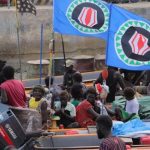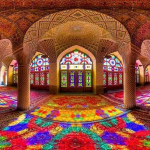Riding a train in Indonesia is nothing like hopping on a European intercity line. It is sweaty, crowded, occasionally terrifying, and always memorable. If you are planning to traverse Java, explore Sumatra, or even test the first stretches in Sulawesi, understanding how to use the train in Indonesia will make your trip infinitely easier.
Trains here are not just a mode of transport, they are a lens into the daily lives of Indonesians, a window onto volcanoes, rice terraces, and villages that cling desperately to the tracks, and a slow, immersive way to experience the country.
A Brief History of Indonesia’s Railways
Indonesia inherited its railways from the Dutch colonial era. The first government-run lines appeared in the late 19th century, primarily in Java, designed to haul goods, troops, and raw materials. After independence in 1945, the government consolidated operations under what would become PT Kereta Api Indonesia, or KAI, which today runs nearly every conventional passenger train on Java and some lines in Sumatra. Over time, many secondary lines were abandoned, but the main corridors linking Jakarta, Bandung, Yogyakarta, and Surabaya survived.
In the last two decades, the government has invested heavily in refurbishing rolling stock, modernizing commuter lines, and even introducing high-speed service. The Whoosh line between Jakarta and Bandung, operated by KCIC, a joint venture with China, is Indonesia’s first true high-speed passenger train, capable of speeds up to 350 kilometers per hour. Meanwhile, conventional intercity lines have seen upgrades in coaches, services, and booking systems, making train travel more comfortable than it has ever been.
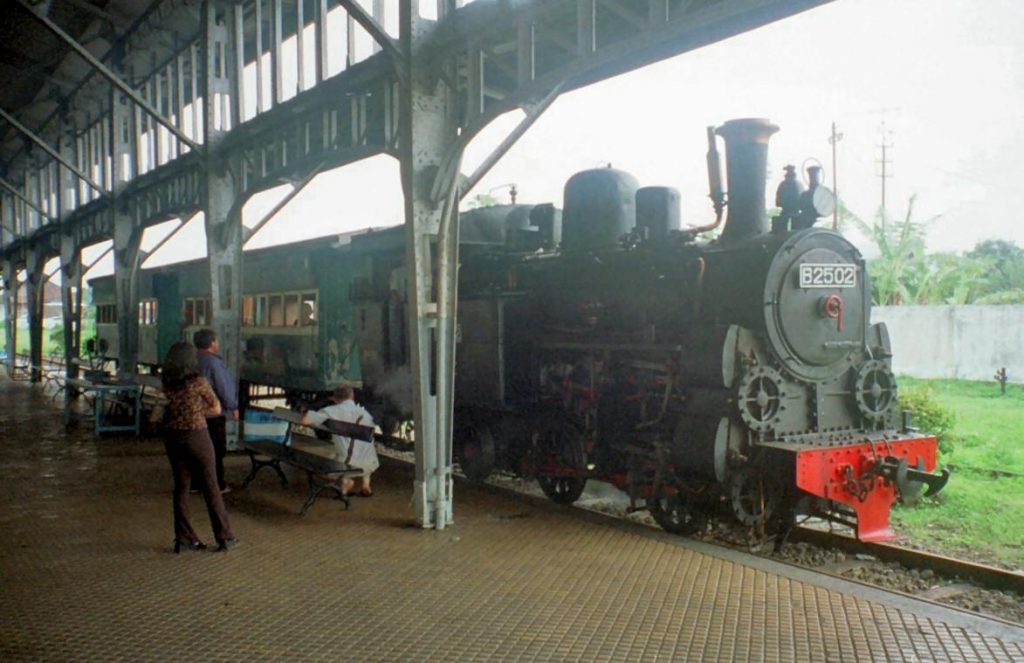
Where You Can and Cannot Ride Trains
Java is the undisputed heart of rail travel in Indonesia. Almost every major city is connected by intercity services, while commuter trains crisscross metropolitan areas like Jakarta and Bandung. If you want a proper Indonesian train experience, this is where it happens.
Sumatra has patchy coverage. North Sumatra around Medan, West Sumatra, and the Lampung/South Sumatra corridor have operational lines, but services are sparse, slower, and often geared toward freight. Intercity travel across Sumatra is limited, so plan carefully.
Sulawesi is just beginning. The first operational section runs from Makassar to Parepare, with plans to extend a Trans-Sulawesi network. Kalimantan, Maluku, Papua, and the smaller eastern islands are almost entirely rail-free. For these regions, trains will only cover a fraction of your journey, and you will rely on planes, buses, or ferries to get around.
Rolling Stock: What You Will Ride
Expect variety. On Java, modern air-conditioned multiple units serve commuter lines, while intercity trains run either refurbished diesel-hauled coaches or newer executive-class carriages. Economy coaches are simpler and more crowded, but generally air-conditioned and serviceable.
Sumatra’s trains are older, slower, and less polished but functional. Sulawesi’s Makassar-Parepare line uses modern DMUs. The Whoosh high-speed line employs KCIC400AF trains capable of 350 km/h, offering an experience that feels like stepping into a completely different country. Freight trains are still hauled by diesel locomotives on most secondary lines, rattling through villages and fields.
Ticket Classes: What You Need to Know
Understanding ticket classes on Indonesian trains is crucial if you want a journey worth taking. Here’s the real breakdown:
Executive Class
Executive is the premium option on intercity trains. Seats are large, reclining, and arranged in 2-1 layouts for maximum legroom. Air-conditioning is strong and consistent, and many trains provide blankets and pillows for overnight trips. Some trains include small meals or snacks, and newer coaches have power outlets. Overnight executive travel is the only way to get a decent night’s sleep on long journeys like Jakarta to Surabaya. Prices generally range from 350,000 to 600,000 IDR ($23–$40 USD) for 6–8 hour trips.
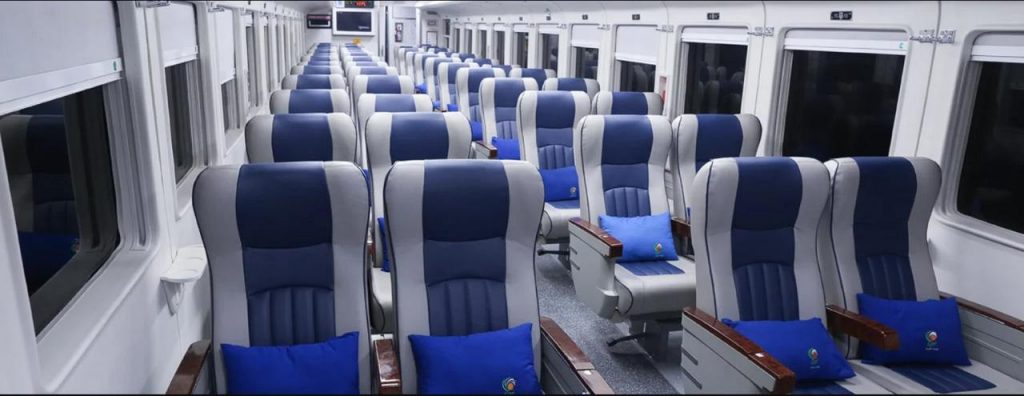
Business Class
Business class offers comfort at a lower price. Seats are arranged 2-2, reasonably spacious, and air-conditioned. Some trains provide snacks, but it’s safer to bring your own food on long trips. Business class is perfect for medium-distance trips where executive is overkill. Fares typically range from 200,000 to 350,000 IDR ($13–$23 USD).
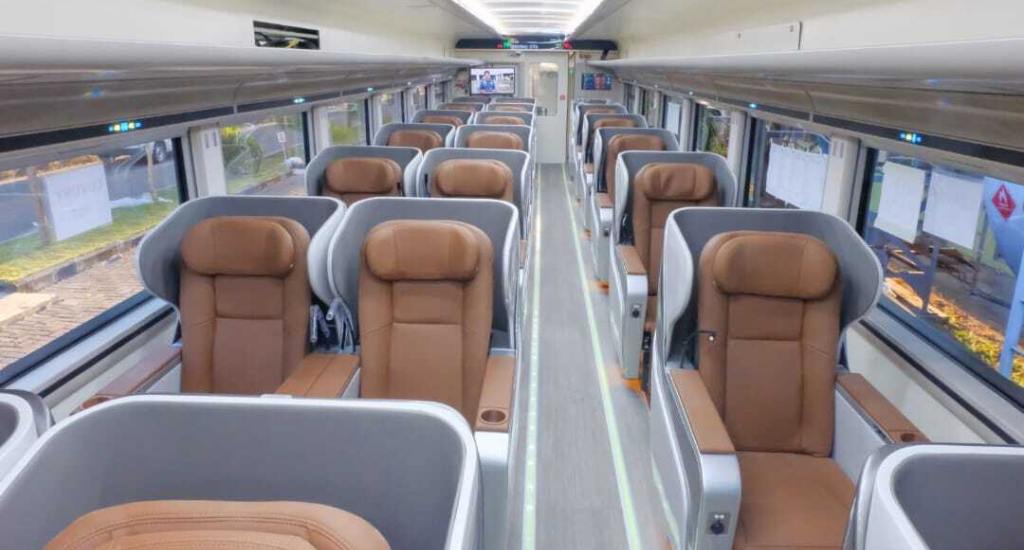
Economy Class
Economy is basic but functional. Seating layouts are often 3-2 or facing benches, and trains are more crowded, especially during peak travel. Air-conditioning is present on most intercity trains. Trolleys may pass through selling drinks or snacks, but it is wise to bring water and food. Overnight economy travel is possible but cramped. Prices vary between 50,000 and 150,000 IDR ($3–$10 USD) for medium-distance trips.
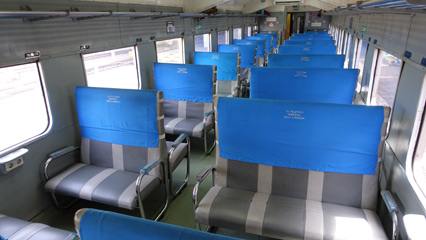
Commuter / Local Trains
Designed for short-distance travel, commuter trains are crowded and mostly used by locals. Carriages feature simple benches or forward-facing seats, and newer trains are air-conditioned. Tickets are cheap, usually under 20,000 IDR ($1–$1.50 USD). Commuter trains are about local life more than comfort.
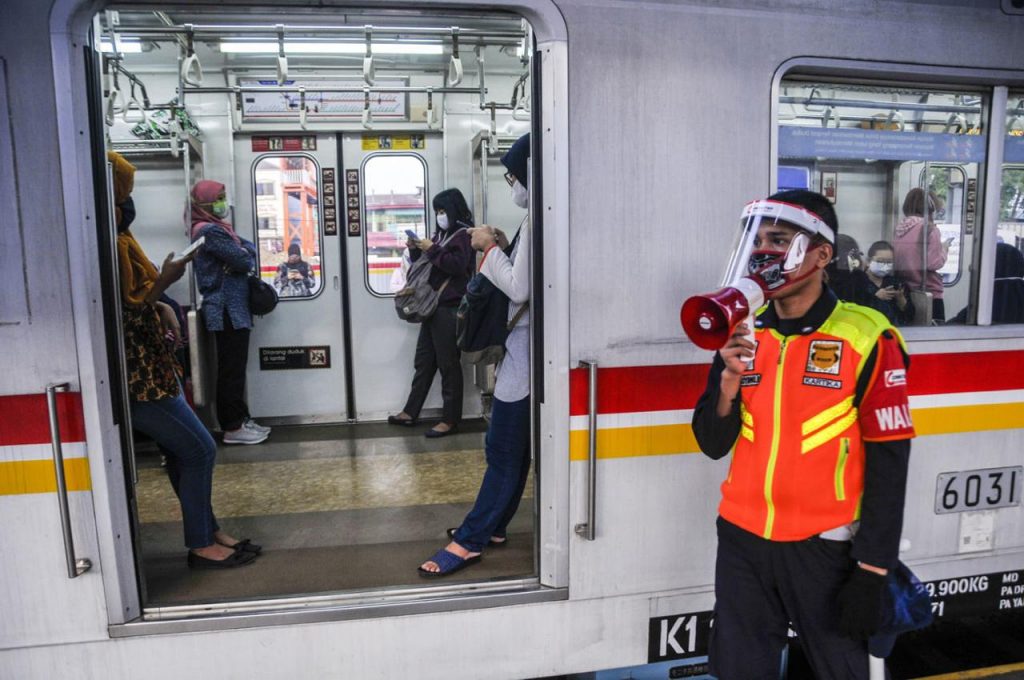
High-Speed Trains (Whoosh)
The Whoosh line has its own ticket classes, often labeled premium, business, and economy. The train moves at 350 km/h, with premium seating offering leather seats, more space, and faster boarding. Tickets cost significantly more than conventional trains but save hours of travel time between Jakarta and Bandung.
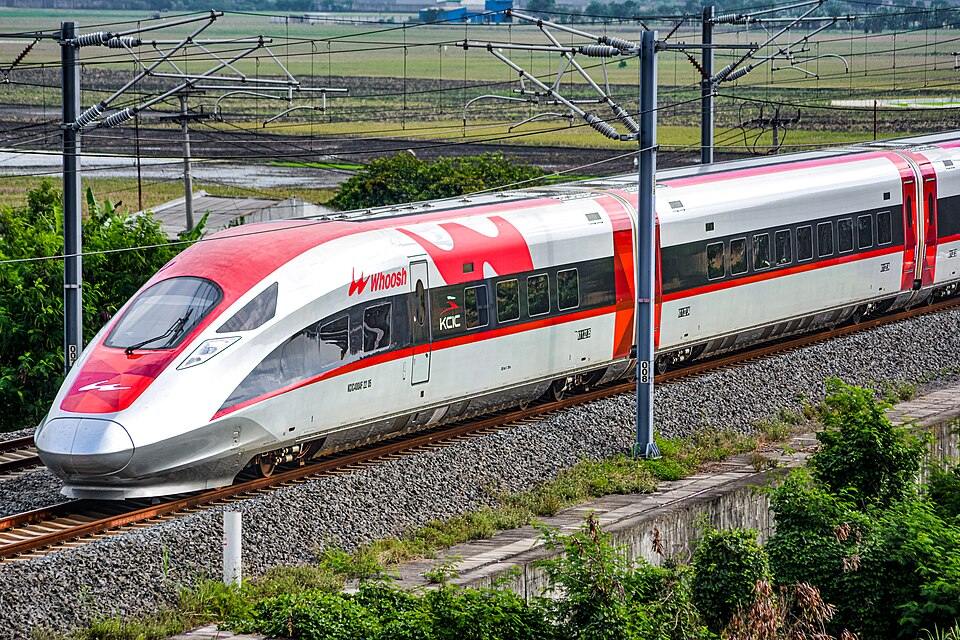
How to Book Tickets
Booking has gone almost entirely online. The official KAI app and website allow seat selection, payment with cards or local e-wallets, and e-boarding passes. Third-party platforms like Tiket.com or Traveloka are useful for foreigners, sometimes bundling trains with buses or transfers.
Station counters and ticket machines still exist, but expect queues and bring identification. Boarding passes can be digital or printed, and some major stations have electronic gates linked to your ticket. Tickets can be booked up to 45 days in advance, and last-minute travel is possible on less crowded routes but risky during peak seasons.
What to Expect Onboard
Train travel in Indonesia has a rhythm all its own. Stations can be chaotic, vendors hawk snacks, and trains may be delayed. Toilets vary from grim to acceptable—bring tissue and hand sanitizer. Executive trains are the cleanest, economy is tighter, and commuter trains are packed.
Food is available on executive and business trains; economy passengers will rely on vendors at stations. The scenery varies from industrial sprawl near Jakarta to terraced rice paddies, rivers, volcanoes, and villages clinging to tracks. Night trains in executive class are survivable; overnight economy is brutal.
Recommended Routes
If you want to experience the best of train travel in Indonesia, these routes are the ones you should consider. Each has its own charm, scenery, and quirks:
Jakarta to Surabaya
This is the ultimate cross-Java journey. The route stretches over 800 kilometers, passing industrial cities, volcanic landscapes, rice terraces, and rural villages clinging to the tracks. Trains here include executive, business, and economy classes, with overnight options available. Expect roughly 10–12 hours in transit. Executive class is recommended for comfort, while economy offers an authentic, bustling local experience.
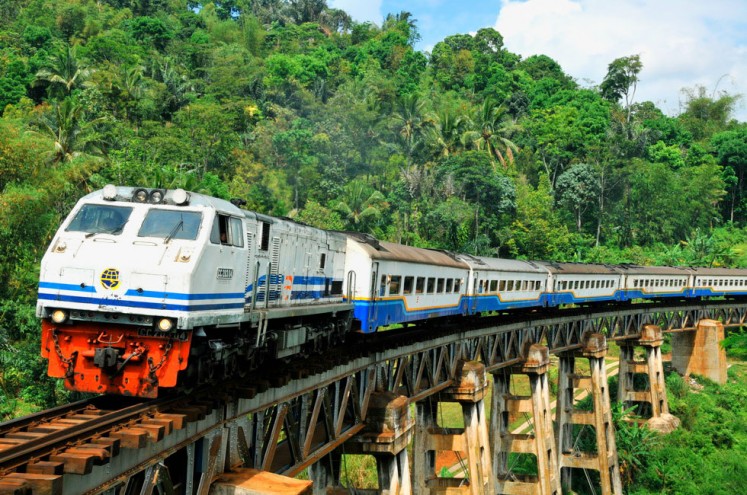
Jakarta to Bandung
This route can be done on conventional intercity trains or the high-speed Whoosh line. Conventional trains take around 3–4 hours and offer a scenic ride through West Java’s mountains and tea plantations. Whoosh cuts the journey to just over 40 minutes, offering leather seats, AC, and a more sterile, modern environment. Both options are worth experiencing, depending on whether you want speed or scenery.
Yogyakarta to Surabaya
Connecting cultural heartlands to East Java, this route passes through small towns, rice paddies, and occasional volcanic ridges. Executive and business class are recommended for longer distances. Economy class is fine for shorter legs. This is also one of the routes where local vendors come aboard at stops, selling snacks and drinks! A genuine slice of Indonesian daily life.

Yogyakarta to Jakarta
This is one of the busiest intercity lines. Executive and business trains dominate, offering reliable air-conditioned service, but economy is packed during peak times. The scenery shifts from dense urban sprawl near Jakarta to river valleys and agricultural land closer to Yogyakarta. Overnight services are popular for travelers wanting to maximize daytime sightseeing.
North Sumatra Lines (Medan and Surrounding Areas)
These routes offer slower, quieter journeys through rural Sumatra. Trains are mostly diesel-hauled, with economy and business classes. Expect longer travel times, fewer amenities, and a more local, relaxed experience. Great for seeing plantation landscapes and small villages untouched by mass tourism.
Sulawesi: Makassar to Parepare
The first operational stretch in Sulawesi is short but historically notable. Travel is by DMU train, air-conditioned, and fairly modern. This route provides a taste of rail travel on an island where trains are still emerging and gives a glimpse of Sulawesi’s landscape without the chaos of buses or ferries.
Practical Tips for Riding Trains in Indonesia
Plan ahead. Tickets sell out fast during holidays. Allow extra time for delays, boarding, and transfers. Experience both slow and fast trains; the contrast between economy and high-speed, commuter and intercity, is part of the adventure.
Share space with locals, observe life, and accept chaos. Keep valuables close. Bring water, snacks, and a jacket for fluctuating air-conditioning. Smile, nod, and let the journey wash over you.
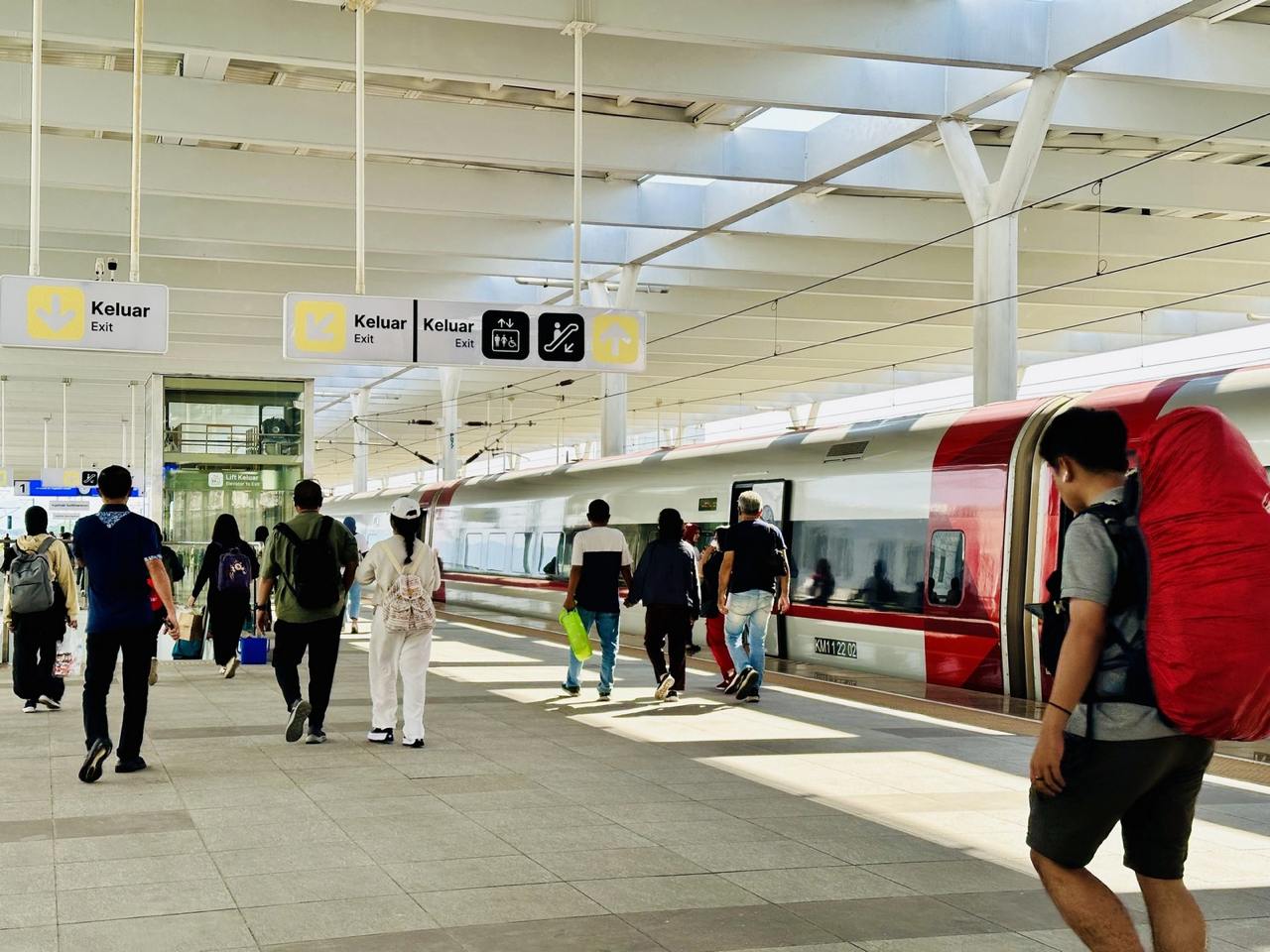
In conclusion
So, is it wroth taking the train in Indonesia? Well while it is not China, Russia, nor even Thailand there are enough epic routes, as well as fun to be had onboard to make it worthwhile.
And this is so much so that we have even set up a Java by Train tour, which combined perfectly with one of our East Timor Tours.
You can check out our Indomesia Tours here.




